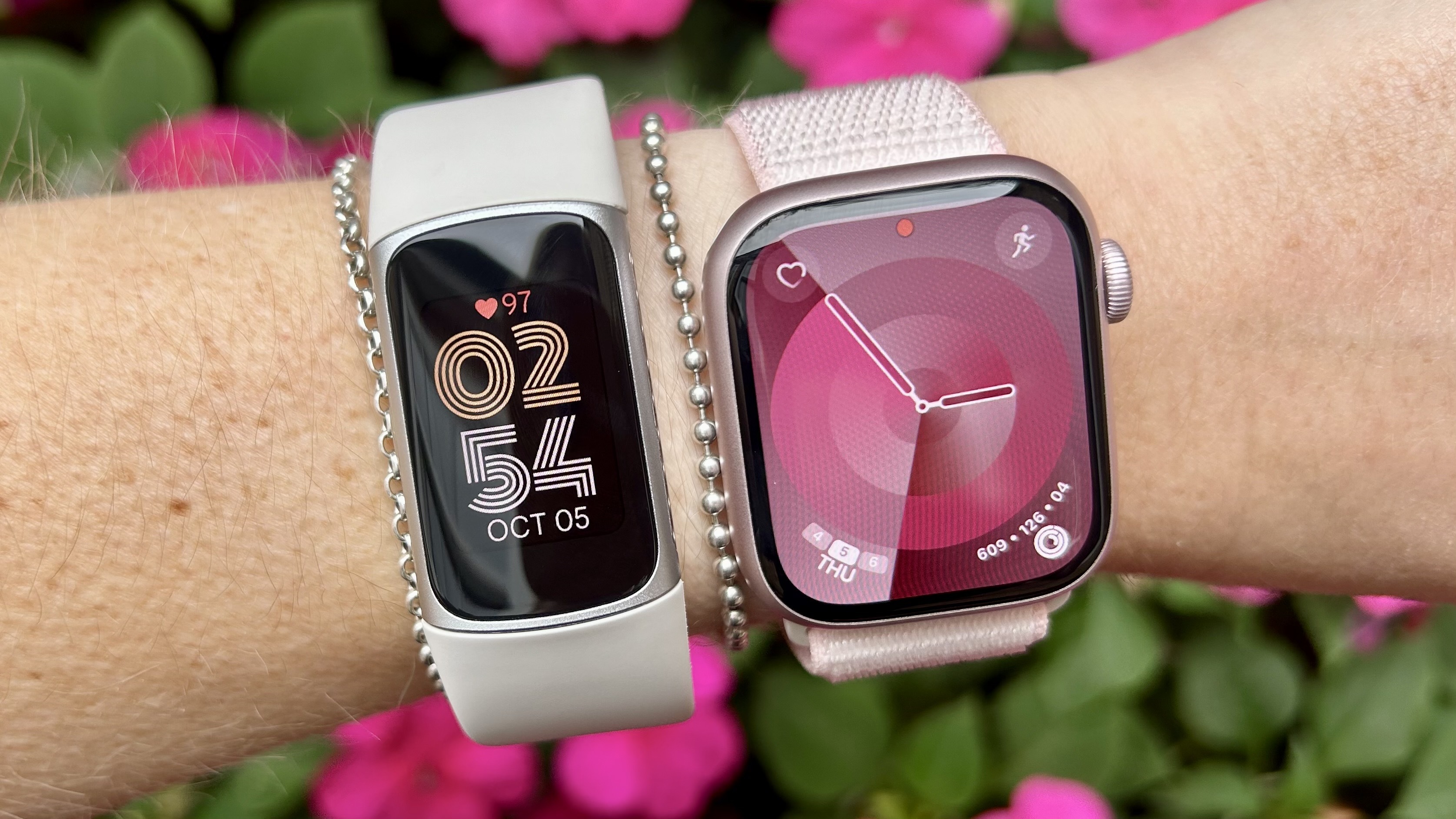
As a fitness editor, there’s nothing I love more than putting two popular fitness trackers to the test. Fans of the Tom’s Guide fitness pages will know I often look at the accuracy of two different watches, including popular brands like Apple, Fitbit, Garmin and Google. This week, however, I decided to return to a previous test and compare the Apple Watch Series 9 with the Fitbit Charge 6.

Here on the Tom's Guide fitness desk, we're all about making 2024 your healthiest, and happiest year yet! To kick things off with a bang, we'll be bringing you a month of motivational content to help you Get Fit with Tom's Guide.
Both watches came out last year and can track a lot more than just steps. Both can accurately record your heart rate, calories burned, hours of sleep, and more.
That said, there are some huge differences between the two — while the Fitbit Charge 6 is one of the best fitness trackers on the market for most people and has Google Maps and Google Wallet for the first time, it’s nowhere near as comprehensive as the Apple Watch 9, which is like wearing an iPhone on your wrist.
The Fitbit Charge 6 costs $159; the Apple Watch 9 costs more than double with a starting price of $399. You can read our Apple Watch 9 review, and our Fitbit Charge 6 review for more info.
I’d already put the Apple Watch 9 and Fitbit Charge 6 head-to-head, but decided to continue my testing to see if anything had changed, now that I’ve had more time with both watches on my wrist. Read on to find out what happened.
I walked 10,500 steps with the Apple Watch 9 and Fitbit Charge 6 — here’s which was more accurate
To put the two trackers to the test, I strapped one to each wrist, grabbed my $7.99 tally counter tool (yes, the kind of thing a bouncer might use outside a nightclub), and got walking. I clicked each time I took a step, and when I got home, I downloaded the data from my Apple Watch 9 and Fitbit Charge 6. I completed three different walks, recording each one.
While Fitbit makes it extremely easy to see exactly how many steps you’ve taken, I’ve learned from experience that Apple really doesn’t. Sure, you can see your daily total in the Fitness app, and you can find hourly step data in the Health app, but to make things a little less confusing, I downloaded the StepsApp Pedometer app on my Apple Watch.
But which watch came out on top? Here are the differences from each walk:
Walk 1
Walk 2
Walk 3
Total
From these results, you could conclude that the Fitbit Charge 6 is slightly more accurate than the Apple Watch 9 when it comes to counting steps, but there’s really not an awful lot in it. In fact, there’s only a difference of 82 steps between the two devices.
Of course, it goes without saying that no fitness tracker will ever be 100% accurate — I’m 5-foot-2 and have quite a short stride. When I’m running, I often find I have a high cadence because of this.
From a user point of view, I found the Apple Watch 9 much easier to navigate around on the walk. Even though it's bigger than the screen on the Fitbit Inspire 3, I still find the screen on the Charge 6 trickier to read on the move, and not quite as responsive. That said, the Apple Watch 9 is a much pricer smartwatch at more than double the cost of the Charge 6.
If you’re looking for a January fitness challenge, walking 10,000 steps per day is a good place to start. It might seem like a huge number, but you can reach it by taking the stairs, not the elevator, getting off the subway a couple of stops early, or meeting a friend for a walk at lunch, not sitting in a coffee shop. There are a number of benefits of walking more, including losing weight, building muscle, and feeling less stressed. Here’s what 30-minutes of walking each day can do for your body, and what happened when I walked 10,000 steps per day for 90 days.







